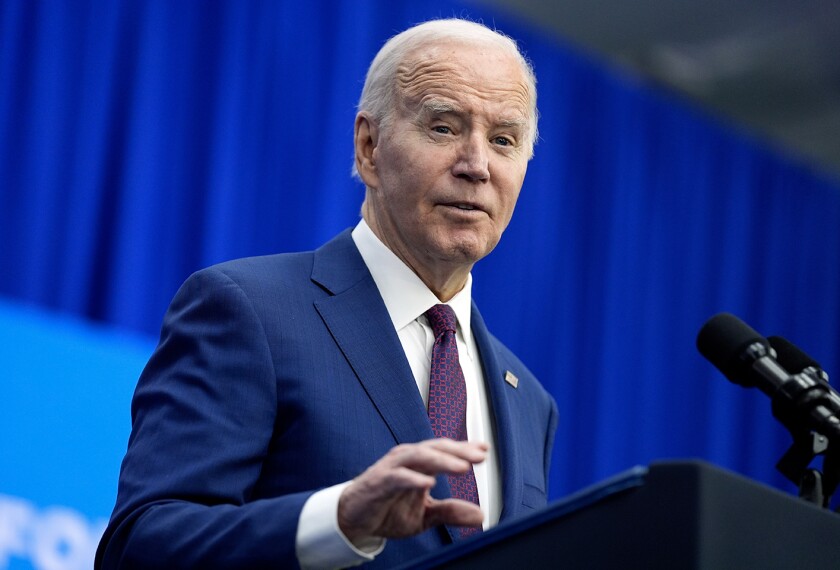The hundreds of cheerful Los Alamitos Elementary School pupils playing dodge ball and four-square on the school’s vast playground on a recent day presented a sharp contrast with the worries their teachers and parents face.
Though their school is in one of the nation’s richest areas, it has such a bare-bones budget that it can’t afford such basic supplies as paper. Dozens of administrators, teachers, librarians, and clerical workers have been laid off, and the raises of those that remain aren’t keeping up with the cost of living.
And with the district closing three elementary schools this summer because of declining enrollment, scores of district employees worry their jobs won’t exist come fall.
Even many of the red rubber balls the children were tossing around were bought with donations.
It’s not supposed to be like this, especially not in San Jose, which is at the center of the technology-rich Silicon Valley. But the enormous deficits that have ravaged the California state budget in recent years are having a sobering trickle-down effect here, just as they are in schools across the Golden State.
As Los Alamitos Elementary ends the school year during what many say is the state’s worst fiscal predicament ever, the impact is clear, the district’s top business administrator says.
“We are in a financial-crisis situation right now,” Gerald Matranga, the associate superintendent for administrative services for the San Jose Unified School District, said this month. “It’s getting to the point where there’s nothing left to cut without eroding the instructional programs, at a time when the expectations for accountability are increasing.”
‘Status Quo’ Budget
In some ways, it’s not surprising that this area would feel such an intense economic pinch. After all, the area has been the lead car on the state’s fiscal roller-coaster ride. As California’s technology fortunes rose sky-high in the 1990s, so did those of the school district. But when those fortunes plummeted, eventually helping to lead the state into as much as $38 billion in red ink last year, so went the spoils for the 31,000-student district.
Los Alamitos Principal Lisa M. Gonzales contends that, in some ways, her school, which serves mostly well-to- do families, is more disadvantaged than schools elsewhere with large numbers of students living in poverty. That is because it receives no federal Title I money or additional state supplemental funds for students from poor families.
Like other districts, however, San Jose has little flexibility in how it raises and spends money—further complicating the school system’s plight.
The state controls about 80 percent of the district’s $242.3 million budget, said Rosemarie Pottage, the district’s finance director. That budget is down from $250.3 million in the 2002-03 school year, she said, adding that the district used reserve funds to patch a $2 million deficit this year.
And California school systems are severely limited in how much they can raise from local taxes. Proposition 13, a 1978 voter-approved constitutional amendment, severely restricts the amount collected in property taxes. Some districts have passed other local taxes, but San Jose voters defeated a measure to enact a parcel tax for schools last year.
Ms. Gonzales joins other California administrators who are frustrated with the inflexibility of state categorical funds. For instance, Los Alamitos Elementary has $500 in state money to repair audio and visual equipment. If the school doesn’t need to repair equipment such as VCRs, it will lose the money, which Ms. Gonzales would rather see spent on much-needed light bulbs.
State officials seem to be listening. Gov. Arnold Schwarzenegger, a Republican who took office last November, has proposed a $39 billion plan that would consolidate 22 categorical programs totaling $2 billion, giving districts and schools greater leeway in how those funds are spent.
State Secretary of Education Richard J. Riordan, the governor’s appointed education adviser, said that the current rigor of the categorical system “drives me insane.”
Gov. Schwarzenegger’s proposed fiscal 2005 budget, expected to be approved by the legislature this summer, was recently revised to give schools a $41 per pupil increase, to $7,007.
Still, “the best way to characterize this budget is ‘status quo,’ ” said Jack O’Connell, the state superintendent of public instruction. “We’re not in dire straits, but treading water.”
Cutting Back
But that water is rising, quickly, in some places.
Before the 2003-04 year began, Los Alamitos Elementary School laid off its librarian, two 3rd grade teachers, the assistant principal, a school secretary, its night custodian, and three part-time reading tutors.
With the loss of the assistant principal, Ms. Gonzales spends more time on discipline, teacher evaluations, and budget matters. Those demands cut into time she would like to spend working on curriculum and classroom issues.
She also serves as a relief person for the two remaining administrative assistants in the front office.
“When I started this job two years ago, never did I think I would have to lay off more than a half-dozen people, some of whom had been here more than 25 years,” she said.
In her spare time, Ms. Gonzales had written about 30 grant applications, more than a third of which have been funded, yielding about $40,000 to supplement the school’s budget this year.
Staff morale has been low, she added. The remaining staff members are working longer hours to handle the increased workload. Many of them say that tasks aren’t getting done and that students are not getting the quality of education they had before the budget cuts.
The effects of many of the cuts are visible.
For instance, the lack of a librarian means pupils don’t have help with research or lessons on using the card catalog, says Linda J. Sessions, who works as the clerk on the one day each week that the library opens.
Perhaps most noticeably, the 3rd grade classes swelled from 20 to 30 children this year after the district took a dramatic step and ended its class-size- reduction funding for that grade.
And school custodian Jim Rouse says that classrooms and restrooms are not kept as clean as they used to be, and that maintenance duties as routine as changing light bulbs take longer. He and several other staff members say they frequently work 10-hour days, but still can’t keep up with their duties.
“We’re putting in extra hours for nothing, just to keep the school going,” Mr. Rouse said.
Parent Support
Los Alamitos, though, is lucky: Many of its parents are willing and able to volunteer their time and money. Some even shell out hundreds of dollars for supplies such as crayons and markers.
“We’re so lucky in this area to have parent support,” said Ms. Gonzales. “Without that, we would not be able to provide art, science, music, or computers.”
Los Alamitos’ PTA raised about $80,000 this school year for programs, including a part-time music teacher, a reading lab for struggling students, and used 2-year-old computers to replace 12-year-old models. Another parent donated $6,000, matched by donations from other parents, to hire a part-time technical assistant to maintain the computers.
“We can’t expect for the parents to pay for everything, and not all the parents could,” Ms. Gonzales said. And though local incomes may be high, so is the cost of living, so that even generous, well-to-do families have their limits.
Modest neighborhood houses cost about $900,000, and recently some families have moved to less expensive areas in the state and neighboring Oregon. District enrollment has dipped by about 2,000 students in the past two years, though student departures have been cushioned in part by an influx of students who had attended private schools.
Many parents say it’s frustrating, and a bit embarrassing, to routinely ask friends and families to buy items such as cookie dough and gift wrap for fundraisers.
“It adds up,” said parent Liana Marquez. “We don’t mind doing it, but why do I need to raise money for supplies?”
Teachers don’t like it either, but they need the help: Many say they spend $1,000 or more on supplies for their rooms each year.
“This is supposed to be a free education, and we have to keep bugging the parents” for donations, said kindergarten teacher Elise Tchelepi.
Parents and teachers also worry about their students’ academic achievement as more assessments and stricter accountability measures come into play. Mostly, they worry that class sizes in kindergarten through 2nd grade will also increase.
A few parents are considering private schools or home schooling for their children, but others said they feel that Los Alamitos Elementary is doing a decent job, in spite of a tight budget.
One parent, who asked not to be identified, said, “I’d rather fund-raise $500 or $1,000 than spend $20,000 on a private school.”
Some parents and teachers are hopeful that Gov. Schwarzenegger’s administration will fix the budget crisis.
Other aren’t so sure.
Mike Thompson, the father of a preschooler, said: “I think she’s getting a good education despite the state’s efforts to destroy that.”




